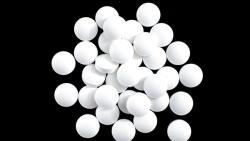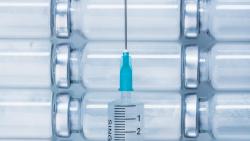
OR WAIT null SECS
- About Us
- Advertise
- Contact Us
- Editorial Info
- Editorial Contacts
- Editorial Advisory Board
- Do Not Sell My Personal Information
- Privacy Policy
- Terms and Conditions
© 2024 MJH Life Sciences™ and Pharmaceutical Technology. All rights reserved.
Factors to Consider in Dissolution Testing
PTSM: Pharmaceutical Technology Sourcing and Management
Principles of dissolution testing, including method development and testing apparatus, are reviewed.
Dissolution testing is an important tool for characterizing the performance of oral solid dosage forms. Its significance is based on the fact that for a drug to be effective, it must first be released from the product and dissolve in the gastrointestinal fluids before absorption into the bloodstream can happen. In other words, the rate and extent of drug absorption are determined by its dissolution from the dosage form.
The purpose of dissolution testing
For a commercial product, this test is routinely used for quality-control and quality-assurance purposes, to ensure consistency between production batches, or to justify scale-up and post-approval changes made to the manufacturing process (1). In early phase drug development, dissolution testing aids formulation design and drug delivery optimization (2); it is primarily carried out to assess product stability, monitor formulation changes over time, and establish in-vitro–in-vivo correlations (3). In cases where in vitro–in vivo correlations have been demonstrated, dissolution can be used as a surrogate test to predict the in-vivo performance of drug products (4). From a regulatory perspective, dissolution testing plays a major role in the decision-making process, particularly in the development and approval of generic dosage forms, where unnecessary human studies can be avoided without compromising the quality of the generic drug products (5).
Factors affecting dissolution
A dissolution test measures the amount of drug that goes into solution over a period of time under standardized conditions. Factors that affect the dissolution of a drug product include the intrinsic properties of the API (e.g., solubility, wettability, particle size, surface area, morphology, polymorphs), the formulation composition and characteristics (e.g., excipients, hardness, manufacturing process), and the dissolution method used for its assessment (e.g., apparatus, medium, test conditions, sampling, and sample analysis) (6).
Method development
In dissolution testing, the aim is to develop a discriminatory method that is sensitive to variables that affect the dissolution rate, and consequently, the in-vivo performance of the drug product. The method must be able to distinguish between drug products manufactured under target conditions and formulations with meaningful variations for the most relevant critical manufacturing variables, such as drug substance particle size, compression force, and tablet hardness, for example (7). The dissolution method should also be sufficiently rugged and reproducible for daily operations as well as transferable between laboratories (7).
Dissolution apparatus
The United States Pharmacopeia and European Pharmacopoeia describe four different dissolution apparatuses that can be used to develop an appropriate dissolution method for oral solid-dosage forms based on the drug product characteristics (8, 9).
Apparatus 1 (basket) and Apparatus 2 (paddle) are most commonly used methods in dissolution testing. Apparatus 1 consists of a vessel made of glass or other inert, transparent material and a cylindrical basket attached to the lower part of a rotating stirrer. The set up for Apparatus 2 is generally the same except that a paddle formed from a blade and a shaft is used as the stirring element. Sinkers may be used for dosage forms that would otherwise float. These apparatuses are simple, robust, well standardized, and flexible enough to allow dissolution testing for a wide variety of oral solid-dosage forms (1). Baskets and paddles are recommended for dissolution method development unless they have been shown to be unsatisfactory (1). One disadvantage with the basket and paddle methods is that the volume for dissolution is fixed. In addition, simulation of gastrointestinal transit condition is not easily possible.
Apparatus 3 (reciprocating cylinder) was develop in recognition of the need for a system that sequentially alters the dissolution conditions to mimic the gastrointestinal tract, so that in vitro-in vivo correlations can be established. Apparatus 3 consists of a set of cylindrical, flat-bottomed glass vessels, a set of glass reciprocating cylinders with inert fittings and screens at the top and bottom of the cylinders, and a motor and drive assembly to reciprocate the cylinders vertically inside the vessels; and if desired, the reciprocating cylinders can be moved horizontally to different rows of vessels (8, 9). Unlike the baskets and paddles, agitation in Apparatus 3 comes from dipping within the vessel, rather than through a stirred media approach. The advantages of the reciprocating cylinder include the ability for pH profiling, which enables simulation of pH changes in the gastrointestinal tract; and the system can be programmed to run dissolution in different media and at different speeds at various times (i.e., programmable dip speeds at each interval and programmable interval time). Such flexibility allows for better in vitro-in vivo modeling.
Apparatus 4 (flow-through cell) consists of a reservoir containing the dissolution medium, a pump that forces the medium upwards through the vertically positioned flow-cell, and a water bath to maintain the temperature of the dissolution medium (8, 9). The flow-through cell apparatus can operate in two different modes-an open system with continuous flow of solvent passing through the cell from the reservoir, and a closed system where a fixed volume of media is recirculated. The open system is suitable for poorly soluble drugs, which require a high volume of media for dissolution. The closed system, on the other hand, is used when a low volume of medium is required.
Dissolution media
Dissolution testing should be carried out under physiological conditions (4). Media selection will be based on the purpose of the dissolution test, taking into account the solubility of the API. Ideally, the dissolution media should meet sink conditions, ensure that the drug is stable for at least 24 hours, preferably avoid the use of surfactants and alcohol where possible, and be biologically relevant for the site of dissolution in vivo (i.e., pH 1.2–6.8 for immediate-release dosage forms and pH 1.2–7.5 for modified-release formulations) (3, 10).
Sink conditions are described as the volume of the media being at least three times of that required to form a saturated solution of the drug substance. Sink conditions ensure that the amount of drug already dissolved in the media does not affect the dissolution rate as the run progresses. If sink conditions are not met, the dissolution rate will artificially slow down as the API nears the saturated solution state, making the dissolution test overly discriminatory and not reflective of in-vivo environment (10). However, although recommended, sink conditions are not always an essential requirement; failing to provide sink conditions may be justifiable in some cases. For example, when dissolution testing is used to indicate the biopharmaceutical properties of the dosage form, it is more important that the proposed biorelevant test closely simulate the gastrointestinal environment than necessarily produce sink conditions (3).
The use of surfactants has to be justified, including the type and concentration of surfactant added into the dissolution media. For poorly soluble drugs, it may not be possible to achieve sufficient dissolution with aqueous solutions within physiological pH ranges; therefore, for these compounds, a surfactant may be required to enhance the drug solubility (3).
Understanding the method
Once a dissolution test has been developed, it is important to have a good understanding of the method’s characteristics and ruggedness. It generally involves testing the method with different lots of the drug product and anticipating the variations that can be expected (1).
References
1. G. Martin and V. Gray, J Valid. Technol. 17 (1) 8-11 (2011).
2. X. Lu, “Filling in the Gaps for In-Vitro Release and Dissolution Testing of Solid Oral Dosage Formulations,” AAPS Blog, Aug. 16, 2016.
3. C. Brown et al., Pharm. Technol. 28 (12) 56 (2004).
4. FDA, Guidance for Industry: Dissolution Testing of Immediate Release Solid Oral Dosage Forms (Rockville, MD, Aug. 1997)
5. O. Anand et al., AAPS J 13 (3) 328-335 (2011).
6. J. Kochling, “Approaches to the Investigation of Dissolution Testing Changes and Failures,” AAPS Webinar, May 23, 2013.
7. USP General Chapter <1092>, “The Dissolution Procedure: Development and Validation,” (US Pharmacopeial Convention, Rockville, MD, 2013).
8. USP General Chapter <711>, “Dissolution,” (US Pharmacopeial Convention, Rockville, MD, 2011).
9. European Pharmacopoeia, Chapter 2.9.3, “Dissolution Test for Solid Dosage Forms,” (EDQM, Strasbourg, France, 2008).
10. K. Boda, “Transferring Dissolution Methods--Building a Robust Dissiolution Method."



